Explore Harare - Zimbabwe Travel, Africa
Harare, the bustling capital of Zimbabwe, is a city full of life, blending modernity with rich cultural heritage. Known as the "Sunshine City," Harare charms visitors with its pleasant climate, tree-lined streets, and friendly locals. From its colorful markets to vibrant arts scene, Harare is a gateway to exploring Zimbabwe's diverse culture and attractions. Whether you're seeking adventure or relaxation, Harare provides an ideal base for discovering the best of Zimbabwe.
Population: Approximately 1.5 million in 2022.
Economy: Harare's economy is diverse, with key sectors including agriculture, manufacturing, and services. The city serves as Zimbabwe’s economic hub, driving growth through trade, finance, and industry.
Landmarks: Famous for the National Gallery of Zimbabwe, Harare Gardens, and Chapungu Sculpture Park.
Zimbabwe
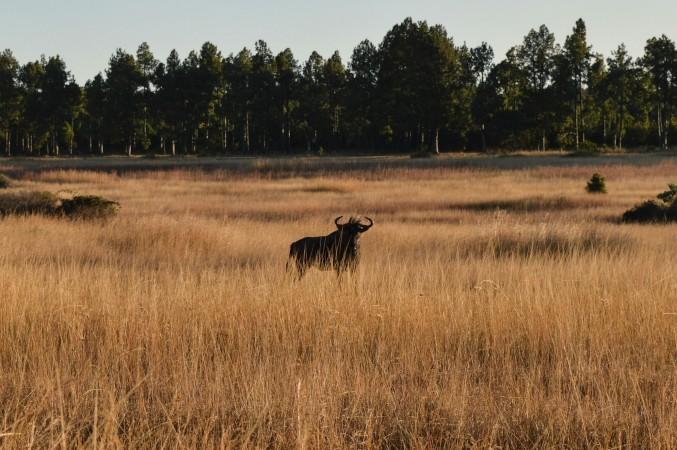
Overview of Harare
History & Culture Influence
Harare’s history is steeped in a mix of indigenous traditions and colonial influences. Founded as Salisbury in 1890 during British colonization, the city has transformed into a thriving metropolis post-independence, officially becoming Harare in 1982. Harare is also a cultural hub, deeply rooted in the Shona traditions, one of Zimbabwe’s major ethnic groups. The city’s cultural heritage showcases the evolution of Zimbabwean art, together with the local music scene, which thrives with the sounds of mbira (thumb piano) and marimba, reflecting the deep cultural resonance of Zimbabwean life.
Interaction with The Locals
Harare, the capital city of Zimbabwe, has a population of approximately 1.5 million people, making it the country's largest city. The population is diverse, with the majority being of Shona ethnicity, alongside smaller groups such as the Ndebele and other minorities. Harare’s citizens are known for their warmth and hospitality, often welcoming visitors with a friendly demeanor. The city has a youthful population, with many people engaged in commerce, education, and the arts.
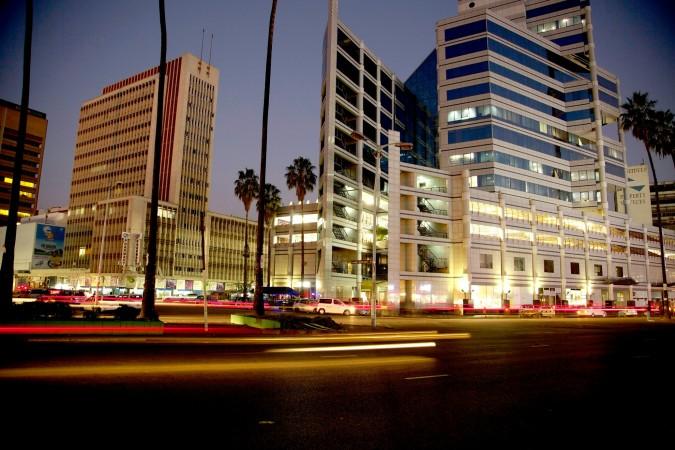
Harare under the city lights - © Tatenda Mapigoti
Top Attractions in Harare
National Gallery of Zimbabwe
The National Gallery of Zimbabwe is a cultural treasure that showcases a stunning collection of contemporary African art. The gallery features works from both local and international artists, highlighting Zimbabwe’s contribution to the global art scene. Visitors can explore exhibitions that include sculptures, paintings, and photography, providing a deep insight into the country's artistic evolution.
Mbare Market
For a genuine experience of local life, visit Mbare Market, Harare's oldest and most bustling market. Fresh fruit and traditional crafts are available here, as well as local fabrics and souvenirs. The market is a sensory experience, bustling with vendors and shoppers, and offers a chance to engage with locals while discovering unique Zimbabwean goods.
Harare Gardens
Harare Gardens is the city's largest public park and offers a peaceful escape from the urban hustle. Located in the city center, this green oasis is ideal for a relaxing walk or a picnic amidst well-maintained lawns, trees, and flower beds. It’s a favorite spot for locals and visitors alike, providing a tranquil setting to unwind or enjoy outdoor events.
The Kopje
For breathtaking views of Harare, a hike up The Kopje is a must-do activity. This granite peak provides panoramic views of the city skyline and nearby surroundings. It’s a popular spot for photographers and those seeking a bit of nature without leaving the city. The climb is short but rewarding, making it a great way to start or end your day in Harare.
Chapungu Sculpture Park
Art lovers should not miss Chapungu Sculpture Park, where Zimbabwe’s renowned stone sculptures are on display in a beautiful outdoor setting. The park celebrates the traditional Shona art form of stone carving, featuring works that capture the cultural and spiritual essence of many areas in Zimbabwe. It’s a perfect spot for those looking to appreciate local craftsmanship and creativity.
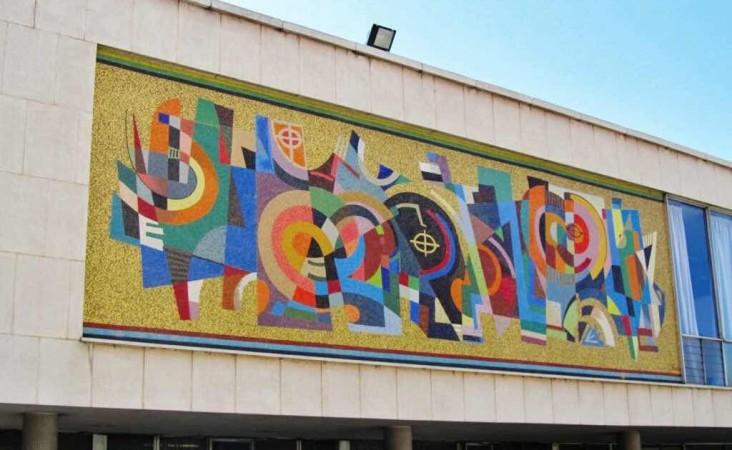
National Gallery of Zimbabwe - © GREEDYSOUTH
Must-Try Dishes in Harare
Harare must-try local dishes offer a rich culinary experience, with each meal showcases the best of Zimbabwean flavors.
- Sadza: A staple food across Zimbabwe, Sadza is a thick, maize-based porridge served with various sides such as meat, leafy vegetables, or stew. It's the heart of many Zimbabwean meals, offering a comforting and filling experience.
- Nyama Choma: Nyama Choma, meaning "grilled meat," is a popular dish found throughout Harare’s eateries and street food stalls and many places around the country. Beef, goat, or chicken is seasoned and grilled to perfection, often enjoyed with Sadza or salads.
- Mopane Worms: An adventurous choice, Mopane worms are considered a delicacy in Zimbabwe. These protein-rich caterpillars are typically dried, fried, or cooked in tomato and onion sauce. They are a local staple, eaten as a snack or side dish, due to their crispy texture and distinct flavor.
- Maheu: Maheu is a traditional fermented maize drink, served as a refreshing beverage or snack. Slightly sour and creamy, it’s both filling and nutritious. Visitors will find this drink readily available at local markets or as a street-side treat.
- Mutakura: Mutakura, a dish made with cooked grains, peanuts, and beans, is a light and nutritious alternative. This nutritious dish is often enjoyed as a snack or side, providing a taste of Zimbabwe's agricultural bounty. It’s a common dish during family gatherings or festivals.
- Peanut Butter Rice: A uniquely Zimbabwean twist on rice dishes, Peanut Butter Rice is cooked rice mixed with creamy peanut butter, creating a rich and savory flavor. It's often served as a side dish with meats or vegetables and is loved for its simple yet satisfying taste.
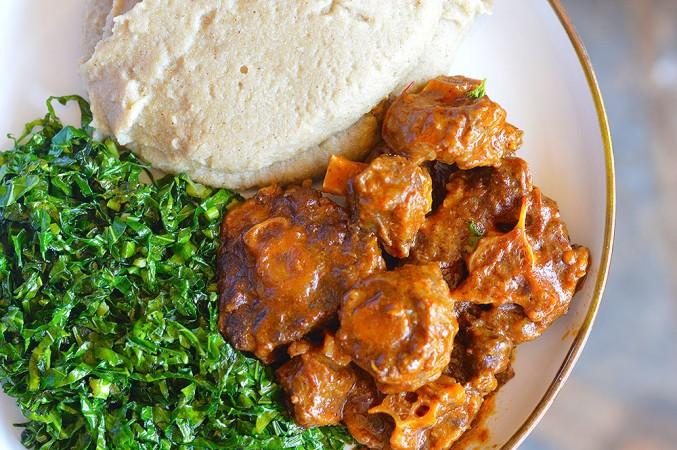
Sadza - © ZimboKitchen
Festivals & Local Celebrations
Harare is a vibrant city with a dynamic cultural calendar, filled with events that highlight its rich heritage, music, and community spirit. These festivals offer visitors an opportunity to experience Zimbabwean culture up close and celebrate with the locals.
Harare International Carnival
The Harare International Carnival is one of the city's biggest annual events. Held in September, this lively street festival brings together music, dance, and costumes from across Zimbabwe and beyond. The event sees colorful parades, live performances, and cultural showcases that reflect the nation’s diversity. It's a must-attend for anyone looking to experience Zimbabwean joy and creativity.
Harare Agricultural Show
A major event in Zimbabwe’s calendar, the Harare Agricultural Show takes place every August. It’s a showcase of Zimbabwe’s farming and agricultural industry, offering exhibitions, livestock displays, and a range of entertainment for families. Visitors can learn about Zimbabwe’s agricultural traditions while enjoying local foods, crafts, and live performances.
Jikinya Dance Festival
The Jikinya Dance Festival celebrates traditional dance, particularly among schoolchildren, as they perform dances from different Zimbabwe ethnic groups. Held annually, it showcases the country’s cultural diversity, highlighting various styles like the Mbende Jerusarema. It’s a family-friendly festival and a great opportunity to see young performers keep Zimbabwean traditions alive.
Shoko Festival
A growing favorite among the youth, the Shoko Festival is Zimbabwe’s biggest urban culture festival, held annually in Harare. It focuses on music, comedy, and spoken word, bringing together Zimbabwean and international artists. Shoko is known for its vibrant atmosphere and fusion of art forms, with performances that appeal to both locals and tourists looking for an alternative festival experience.
Crave for festivals? Read more about Zimbabwe culture in another famous place, Bulawayo here.
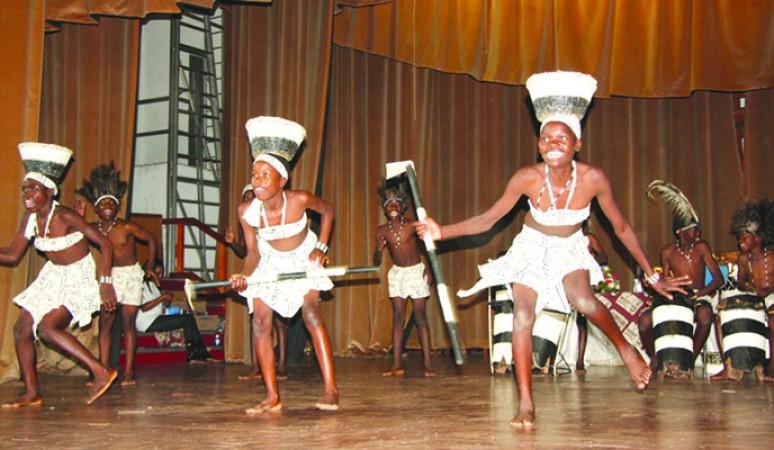
Jikinya Dance Festival - © NewsDay Zimbabwe
What to Do in Harare
- Wildlife Safaris in Harare: Although Harare is an urban center, several game reserves are within easy reach. You can embark on a day trip to Lion & Cheetah Park or Lake Chivero Recreational Park to see wildlife such as lions, zebras, and antelopes.
- Birdwatching at Lake Chivero: Lake Chivero is a birdwatcher's paradise, with over 400 species documented in the vicinity. Birdwatching tours around the lake are a peaceful way to connect with nature while observing species like the African fish eagle and the sacred ibis.
- Explore Shona Sculpture Gardens: The Shona Sculpture Gardens feature a collection of stunning stone sculptures created by Zimbabwean artists. The outdoor gallery provides a serene setting to appreciate the intricate craftsmanship of Shona art.
- Relax at Lake Chivero Recreational Park: Lake Chivero Recreational Park offers a range of outdoor activities, including picnicking, boating, and fishing. This scenic lake is surrounded by a wildlife reserve where visitors can see animals like giraffes, rhinos, and various bird species.
Shopping in Harare
- Avondale Flea Market: The Avondale Flea Market is a favorite among locals and tourists alike. Known for its vibrant atmosphere, this market offers an eclectic mix of items, including handcrafted jewelry, artwork, and vintage clothing.
- Sam Levy’s Village: For a more upscale shopping experience, Sam Levy’s Village in Borrowdale is the place to go. This open-air mall features boutiques, restaurants, and luxury stores. It’s a great spot for travelers seeking both local and international brands.
- Mbare Market: As Harare’s largest market, Mbare is ideal for those looking to immerse themselves in the local culture. This bustling market offers everything from traditional foods to crafts.
- Eastgate Mall: Eastgate Mall is a modern shopping complex located in Harare’s central business district. It offers a variety of retail stores, cafes, and restaurants, making it a convenient place for tourists to shop and relax after a day of sightseeing.
While in Zimbabwe, you can also visit Mutare, and learn more about the destination here.
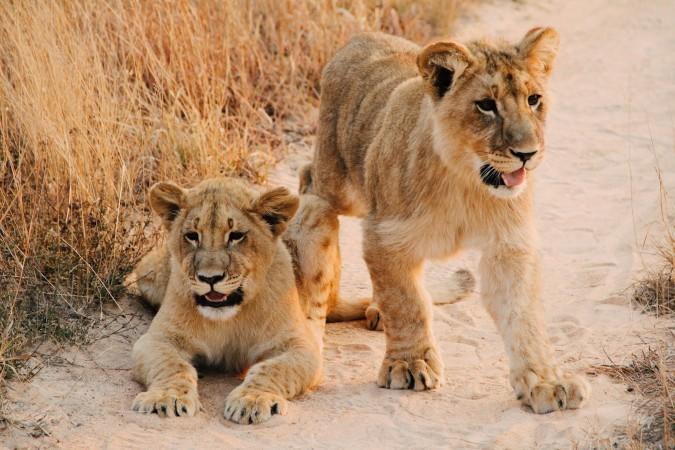
Wildlife Safaris in Lion & Cheetah Park - © Christine Donaldson
Weather in Harare: Best Time to Visit
Spring in Harare
- Weather: Spring ushers in a warming trend with temperatures between 15°C and 30°C (59°F to 86°F) and minimal rainfall. The city begins to bloom, showcasing beautiful flowers and revitalized greenery.
- Tourism Trend: Spring is ideal for outdoor festivals and nature walks, as visitors take advantage of the pleasant weather to experience Harare’s vibrant cultural scene and natural beauty.
Summer in Harare
- Weather: Summer in Harare brings warm temperatures, ranging from 20°C to 30°C (68°F to 86°F), along with the rainy season.
- Tourism Trend: The frequent afternoon thunderstorms rejuvenate the city’s lush landscapes, making it an excellent time for nature enthusiasts to explore the vibrant greenery. Tourism trends during this period include increased interest in botanical gardens and wildlife parks, as the rain revitalizes the natural surroundings.
Autumn in Harare
- Weather: Autumn sees cooler temperatures between 15°C and 25°C (59°F to 77°F) and reduced rainfall.
- Tourism Trend: The dry and pleasant weather is ideal for sightseeing and outdoor activities. This is a popular time for visitors to enjoy Harare’s parks, markets, and cultural festivals, as the comfortable temperatures make exploring the city’s attractions more enjoyable.
Winter in Harare
- Weather: Winter offers colder temperatures, with daily highs of 10°C to 20°C (50°F to 68°F) and nightly lows of 5°C (41°F). Despite the dry weather, mornings and nights might make you feel chilly.
- Tourism Trend: Winter is a favorable time for city tours and indoor cultural experiences, as the cooler temperatures provide a respite from the heat and allow for comfortable exploration of museums, galleries, and theaters.
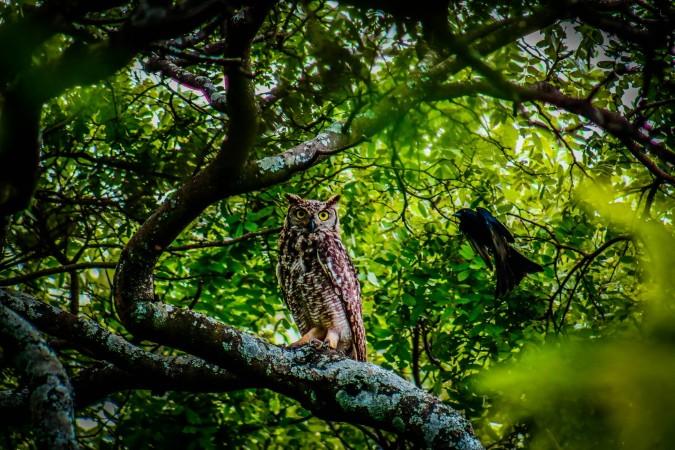
Birdwatching in Harare - © Benjamin Van Der Merwe
Essential Travel Information
Getting Around Harare
- Public Buses: Harare has a network of public buses operated by the Harare City Council, which provide an affordable way to travel around the city. Routes cover major areas and are a common choice for both locals and tourists.
- Combi Taxis: Combi taxis are shared minivans that offer a more flexible and informal transportation option. They are a popular choice for short trips within the city and are known for their convenience and cost-effectiveness.
- Taxis and Ride-Sharing: Taxis are readily available throughout Harare. For a more modern option, ride-sharing services like Uber and Bolt operate in the city, providing a reliable and easy way to get around. They offer a convenient way to travel directly to your destination.
- Private Cars: For those who prefer driving themselves, car rentals are available at various locations in Harare. Renting a car provides flexibility to explore the city and surrounding areas at your own pace.
- Bicycles and Walking: Harare’s central areas are relatively pedestrian-friendly. Walking or renting a bicycle can be a pleasant way to explore local attractions, parks, and markets, especially in the more compact parts of the city.
ATM & Banking Services
Harare makes it easy to manage your finances, with a variety of ATM and banking services available around the city. ATMs are conveniently located in central areas and major shopping centers, generally accepting international cards. Banks offer various services, including currency exchange, cash withdrawals, and financial advice. While the local currency is the Zimbabwean Dollar (ZWL), US dollars are also widely accepted. Currency exchange services are available at banks, hotels, and dedicated exchange bureaus, so comparing rates and fees beforehand can help you get the best deal.
Where to Stay in Harare
- Luxury Hotels: For a luxurious stay, consider top-end hotels offering exceptional amenities such as fine dining, spa services, and stunning city views. These establishments are perfect for travelers seeking comfort and high-end services.
- Mid-Range Hotels: Mid-range accommodations provide a balance of comfort and affordability. Look for hotels that feature amenities like swimming pools, restaurants, and business facilities, catering to both leisure and business travelers.
- Budget Lodgings: For budget-friendly options, seek out hostels and budget hotels that offer affordable and comfortable stays. These lodgings typically provide essential amenities and a welcoming atmosphere, ideal for travelers watching their expenses.
Check out our other tours in Africa here.
Articles for you

Explore Yala National Park - Sri Lanka Travel, Asia
Tucked away in Sri Lanka’s southeastern corner, Yala National Park is where wild nature meets deep tradition. Known worldwide for its leopard population, the park is also home to elephants, sloth bears, crocodiles, and hundreds of bird species. Beyond wildlife, Yala opens doors to a cultural landscape dotted with ancient temples, Buddhist ruins, and coastal villages. For travelers seeking more than just a safari, Yala offers a chance to explore eco-tourism, local communities, and sacred heritage sites.
Population: The Yala National Park area doesn’t have a human population.
Economy: The economy around Yala National Park thrives on a blend of eco-tourism, agriculture, and local services. Safari tours, eco-lodges, and cultural experiences drive steady income for nearby towns like Tissamaharama and Kataragama, supporting thousands of families.
Landmarks: Famous for Block I of Yala and wildlife encounters, including elephants, sloth bears, crocodiles, and exotic bird species.

Explore Galle - Sri Lanka Travel, Asia
Nestled on Sri Lanka’s southern coastline, Galle is a vibrant city where history meets the sea. Its cobbled streets, colonial architecture, and serene beaches make it a must-visit destination for travelers seeking a blend of culture, adventure, and relaxation. A UNESCO World Heritage site, Galle captivates visitors with its Dutch Fort, bustling markets, and friendly locals. Whether you’re exploring the ramparts at sunset or savoring fresh seafood by the shore, Galle promises an unforgettable journey into Sri Lanka’s heritage.
Population: Approximately 113,000 in 2023.
Economy: Galle’s economy thrives on tourism, trade, and fisheries. The city’s historic fort, colonial architecture, and coastal charm draw thousands of international visitors each year, making tourism its main economic driver. Fishing remains vital for local livelihoods, supplying fresh seafood across the region.
Landmarks: Famous for the Galle Fort, Dutch Reformed Church & Maritime Museum, and Unawatuna Beach.

Explore Bentota - Sri Lanka Travel, Asia
Nestled along Sri Lanka’s southwestern coast, Bentota is a tropical paradise that blends golden beaches, vibrant culture, and thrilling adventures. Famous for its calm waters, luxury resorts, and scenic river estuary, Bentota has become a top destination for travelers seeking both relaxation and authentic experiences. From serene beach walks at sunrise to adrenaline-pumping water sports, this coastal town offers a perfect balance of leisure and exploration. With its proximity to Colombo and Galle, Bentota is easy to reach, making it an ideal stop for both short escapes and extended holidays.
Population: Approximately 37,000 in 2023.
Economy: Bentota’s economy thrives mainly on tourism, which drives local businesses such as hotels, restaurants, and wellness retreats. The town also benefits from fishing, coconut cultivation, and handicrafts like wood carving and batik textiles. Many residents rely on the growing demand for water sports and Ayurvedic treatments, making tourism the backbone of both income and employment in the area.
Landmarks: Famous for Bentota Beach, Bentota River Safari, and Kande Vihara Temple.

Explore Mirissa - Sri Lanka Travel, Asia
Mirissa is a charming coastal town on Sri Lanka’s southern shoreline. Known for its golden beaches, turquoise waters, and vibrant marine life, it has become a must-visit stop for travelers exploring the island. Many come for whale watching, surfing, and sunset views at Coconut Tree Hill, but Mirissa offers much more than postcard beauty. The fishing boats you see anchored by the bay carry generations of stories. Local traditions, delicious cuisine, and a laid-back rhythm of life shape every visitor’s experience.
Population: Approximately 4,700 in 2023.
Economy: Mirissa’s economy is largely shaped by its coastal location. Fishing has long been the backbone of local livelihoods, with generations relying on the Indian Ocean for income. In recent decades, tourism has become the main driver of growth, thanks to whale watching, surfing, and beachside hospitality.
Landmarks: Famous for Mirissa Beach, Coconut Tree Hill, and Parrot Rock Bridge.

Explore Nuwara Eliya - Sri Lanka Travel, Asia
Tucked away in the Central Highlands of Sri Lanka, Nuwara Eliya is often called “Little England”. With its rolling tea plantations, cool misty mornings, and colonial charm, this mountain town feels like a step into another world. Travelers come here to breathe fresh air, walk through flower gardens, sip the finest Ceylon Tea, and enjoy a pace of life far from the island’s busy cities. Whether you’re drawn by scenic landscapes, heritage architecture, or the warmth of its people, Nuwara Eliya is a destination that blends nature, culture, and history in perfect harmony.
Population: Approximately 781,000 in 2023.
Economy: Nuwara Eliya’s economy thrives mainly on tea production, as it sits in the heart of Sri Lanka’s central highlands, famous worldwide for Ceylon Tea. The city also benefits from a growing tourism industry, attracting visitors with its colonial charm, cool climate, and scenic landscapes.
Landmarks: Famous for Gregory Lake, Hakgala Botanical Garden, and Victoria Park.

Explore Sukau - Malaysia Travel, Asia
Nestled on the banks of the Kinabatangan River in Sabah, Malaysian Borneo, Sukau is a destination where wildlife, culture, and conservation come together. Known as one of Asia’s top spots for river safaris and eco-tourism, this quiet village offers a front-row seat to encounters with Bornean orangutans, pygmy elephants, proboscis monkeys, and exotic birdlife.
Population: Approximately 1,400 in 2019.
Economy: Sukau’s economy is shaped by its riverine location and natural resources. Traditionally, the Orang Sungai community relied on fishing, small-scale farming, and forest gathering for their livelihood. Today, the village has shifted toward eco-tourism, with river cruises, jungle trekking, and homestays providing income.
Landmarks: Famous for the Kinabatangan River cruises, Gomantong Caves, and Ox-bow lakes and wetlands.
